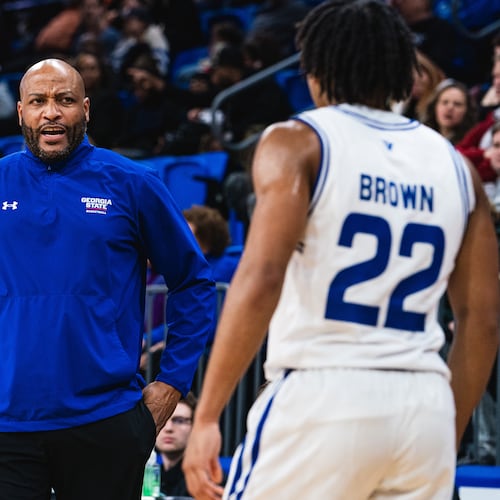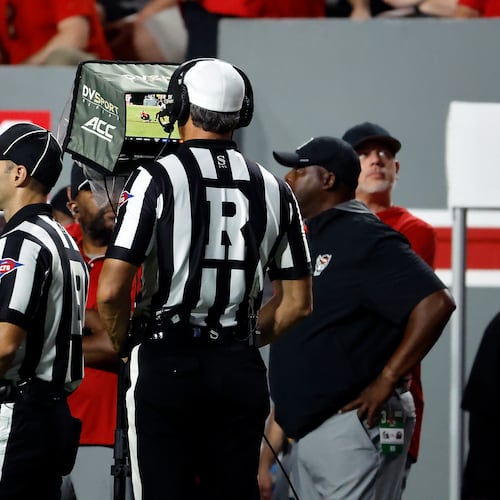The dessert for the Clemson football banquet was a delectable cake with the team picture of the Tigers imprinted on the icing. The guests, who included current players and recruiting prospects and parents, marveled at it and dug in.
“It was something else, you should have seen this cake,” said Tommy Bowden, who was Clemson’s coach at that time.
Then came the plate of cookies and a bewildering collision with the NCAA rulebook. Coaches and parents of recruits had adjourned to another room to chat over coffee, and somebody brought in cookies for the crowd.
“We had to turn ourselves in for a secondary violation,” Bowden said. “You are not allowed to have a second dessert at one of these functions. It’s an extra benefit.”
Dessert infractions might be tough for a coach to stand guard over, but so are some other secondary violations. A fan shouting the name of a recruit during a visit, or an aggressive reporter hustling to the side of a recruit to find out the kid’s college plans while he is on campus are considered infractions.
In fact, the NCAA does not keep a specific list of secondary violations. The key is whether the NCAA determines a particular behavior gives a school a recruiting advantage.
“Secondaries” have doubled in the past few years — from 2,000 in 2004 to 3,916 in 2008. Athletic departments have hired squadrons of “compliance” officers — a growth industry in a down economy. Georgia has had a compliance director for many years and hired an assistant director five years ago. Georgia Tech has a similar setup.
Bowden chuckled over the phone. Some secondary violations just happen. Others are not so innocent. Coaches, he said, are famous for weighing risks and rewards when it comes to bumping up against NCAA rules. Major violations can strip a school of athletic scholarships or get it banned from postseason play, but secondary violations are considered less hazardous.
Tom Lemming, a longtime college football recruiting analyst, said the rise in the number of secondary violations coincides with the NCAA decision to restrict access to recruits.
Lemming said text-messaging between the college coach and a recruit was restricted recently, which has led to a bending of rules by coaches trying to stay connected to players. He said coaches also have been banned from extended face-to-face contact with junior recruits from April 15-May 31, and that has led to creative ways to get in front of prospects.
Bowden said coaches will schedule a seminar at a high school with a high-profile recruit so the recruit can get a whiff of the coach’s expertise during the talk, which can lead to a secondary violation. If the coach just happens to make contact with the recruit, well, whoops.
Mike Slive, commissioner of the Southeastern Conference, said: “In the SEC, whoops is not a defense.”
Policing from within
Georgia has reported eight secondary violations in the past six months, four by the football program. Tennessee has reported six in the first seven months of the reign of coach Lane Kiffin, who was hired in December. Auburn might be in trouble for a rally of students in front of recruits at Toomer’s Corner, a popular postgame gathering spot. They were trying to show recruits how the Tigers celebrate a win.
Slive was so alarmed at the frequency of secondary violations occurring at schools in his conference that he warned his coaches at SEC Media Days last month to better monitor their behavior. He also sought to counter the perception that secondary violations are trifling abuses.
“An entire coaching staff has lost the ability to make recruiting telephone calls for an extended period of time,” Slive said. “Coaches have been prevented from participating in all off-campus recruiting activities. Institutions have been prevented from having any recruiting contact with prospects for an extended period of time, and teams have lost practice opportunities.”
Stacey Osburn of the NCAA said the increase in reported secondary violations has more to do with schools adding to their compliance staffs who uncover the violations, as well as the media tracking the violations.
“There has been an increase in resources devoted to compliance, and this inevitably leads to increased education and monitoring,” Osburn said. “Anecdotally, five years ago, the largest institutions had two, maybe three people in compliance — now some have as many as eight or more. At the smaller schools, part-time compliance officers are being replaced by two full-time people.”
Doing what is right
Penalties for secondary violations can include fines up to $5,000, but can be deemed serious enough to result in forfeits if an ineligible athlete participated in a win. Major violation penalties can include forfeiture of wins, scholarship reductions, and postseason bans.
“You obviously know if it’s right or wrong. I don’t think it is so difficult,” said Les Miles, the football coach at LSU. “You know what is right and wrong, and if you don’t, it’s a mistake.
“If they do commit these violations, then they are teaching their kids and players the wrong things. It’s right to do right. I will tell you one thing: Dear Lord, I do not want to end up in an article that said I was in knowing violation of NCAA rules.”
In one interview, Kiffin insisted his secondary violations were not premeditated, and a risk-reward venture. He used Bryce Brown’s name in the media before the No. 1 running back in the country signed with the Vols.
“They were not premeditated violations and none of them were major by any means and none of them gained us major advantages,” Kiffin said. “If you break each one of them down, not one of them helped us sign a kid.”
Kiffin, however, told media in another interview: “Do I love every single thing I’ve done for my seven months? No, I haven’t loved having to do it. But it needed to be done, in my opinion, for us to get to where we needed to be.”
Bowden said one of the issues involved in the rash of secondary violations is the make-up of the compliance staff. If the athletics director appoints compliance personnel at a school, those watchdogs are more likely to report secondary violations.
If the coach has appointed the compliance official and recommended compliance staff, then secondary violations are less likely to be reported.
Larry Templeton, a former athletics director at Mississippi State, said secondary violations are so common that he would investigate a school that was not reporting any. He also said that when a pattern develops — that is when a school is flagged for a number of secondary violations — sirens should go off.
“If it is the same coach, doing the same thing, you have a problem,” Templeton said. “If a guy made a mistake and told us about it because he didn’t know about it, I can live with that. I better not find a guy who knew he was doing it wrong and went ahead and did it.”
About the Author
Keep Reading
The Latest
Featured

